Popular categories
Looking for a yarn?
Order DROPS Kid-Silk from Wool Warehouse Direct Ltd

|
DROPS Kid-Silk uni colour 75% Mohair, 25% Silk |
6.75 $ /25g |
Order |
Clicking the ORDER button will redirect you to Wool Warehouse Direct Ltd website
Order DROPS Needles & Hooks
Clicking the ORDER button will redirect you to Wool Warehouse Direct Ltd website
The yarn cost is calculated from the pattern’s smallest size and the yarn’s cheapest product type. Looking for an even better price? You might find it on the DROPS Deals!
Swan Grace
Knitted sweater in DROPS Air and DROPS Kid-Silk. Piece is knitted bottom up with I-cord pattern and set sleeves. Size: S - XXXL
Change language:
English (US/in)- English (US/in)
- Česky
- Dansk
- Deutsch
- Eesti keel
- English (UK/cm)
- Español
- Français
- Íslenska
- Italiano
- Magyar
- Nederlands
- Norsk
- Polski
- Português
- Suomi
- Svenska
- English (UK/cm), Bulgaria
- English (UK/cm), Croatia
- English (UK/cm), Greece
- English (UK/cm), Latvia
- English (UK/cm), Lithuania
- English (UK/cm), Romania
- English (UK/cm), Slovenia
- Česky, Slovakia
#swangracesweater
DROPS design: Pattern ai-479Yarn group C + A or D
----------------------------------------------------------
SIZE:
S - M - L - XL - XXL – XXXL
Finished measurements:
Chest measurements: 92-98-108-116-130-142 cm = 36¼"-38½"-42½"-45¾"-51¼"-55¾"
Full length: 48-50-52-54-56-58 cm = 19"-19¾"-20½"-21¼"-22"-22¾"
All measurements in charts are in cm.
YARN:
DROPS AIR from Garnstudio (belongs to yarn group C)
250-300-300-350-350-400 g color 01, off white
And use:
DROPS KID-SILK from Garnstudio (belongs to yarn group A)
100-100-125-125-125-150 g color 01, off white
NEEDLES:
DROPS CIRCULAR NEEDLE SIZE 7 MM = US 10.75: Length 40 and 80 cm = 16" and 32".
DROPS CIRCULAR NEEDLE SIZE 5.5 MM = US 9: Length: 80 cm = 32"
DROPS DOUBLE POINTED NEEDLES SIZE 7 MM = US 10.75
The technique MAGIC LOOP can be used – you then only need circular needle of 80 cm = 32" in each size.
KNITTING GAUGE:
13 stitches in width and 16 rows vertically in stockinette stitch and 1 strand of each quality = 10 x 10 cm = 4" x 4".
NOTE! Remember that needle size is only a suggestion. If you have too many stitches on 10 cm = 4" switch to larger needles. If you have too few stitches on 10 cm = 4" switch to smaller needles.
-------------------------------------------------------
Alternative Yarn – See how to change yarns here
Yarn Groups A to F – Use the same pattern and change the yarn here
Yarn usage using an alternative yarn – Use our yarn converter here
-------------------------------------------------------
You might also like...
Order DROPS Air from Wool Warehouse Direct Ltd

|
DROPS Kid-Silk uni colour 75% Mohair, 25% Silk 6.75 $ /25g Order |
Clicking the ORDER button will redirect you to Wool Warehouse Direct Ltd website
Order DROPS Needles & Hooks
Clicking the ORDER button will redirect you to Wool Warehouse Direct Ltd website
The yarn cost is calculated from the pattern’s smallest size and the yarn’s cheapest product type. Looking for an even better price? You might find it on the DROPS Deals!
Pattern instructions
EXPLANATION FOR THE PATTERN:
----------------------------------------------------------
GARTER STITCH (when working back and forth):
Knit on all rows, i.e. knit from right side and knit from wrong side.
1 ridge vertically = knit 2 rows.
I-CORD BIND-OFF (sleeve):
At the end of round and after last stitch on round has been worked:
Cast on 4 new stitches on right needle from right side with 1 strand in each quality.
Slip the 4 new stitches from right needle on to left needle so that working yarn is 4 stitches in on left needle (the working yarn tightens the piece when working to form a little tube).
ROW 1 (= right side):
Knit 3, knit the next 2 stitches twisted together.
ROW 2 (= right side):
Slip the 4 stitches from right needle back on left needle, knit 3, knit the next 2 stitches twisted together.
Repeat ROW 2 until 4 stitches remain on right needle. Slip the 4 stitches from right needle back on left needle. Bind off.
Sew a little stitch that binds beginning/end of I-cord together.
I-CORD BIND-OFF (neck edge):
Cast on 3 stitches on right needle from right side with 1 strand in each quality.
Slip the 3 new stitches from right needle on to left needle so that working yarn is 3 stitches in on left needle (the working yarn tightens the piece when working to form a little tube).
ROW 1 (= right side):
Knit 2 together, knit the next 2 stitches twisted together.
ROW 2 (= right side):
Slip the 3 stitches from right needle back on left needle, knit 2, knit the next 2 stitches twisted together.
Repeat ROW 2 until 3 stitches remain on right needle. Slip the 3 stitches from right needle back on left needle. Bind off.
Sew a little stitch that binds beginning/end of I-cord together.
INCREASE TIP:
All increases are done from the right side.
Increase 1 stitch by making 1 yarn over inside the 4 outermost stitches on row. On next row purl yarn over twisted to avoid hole.
DECREASE TIP-1 (armhole and neck):
All decreases are done from the right side!
DECREASE 1 STITCH AT THE BEGINNING OF ROW AS FOLLOWS:
Knit 3, slip 1 stitch knitwise, knit 1, pass slipped stitch over stitch worked (= 1 stitch decreased).
DECREASE 1 STITCH AT THE END OF ROW AS FOLLOWS:
Work until 5 stitches remain on row, knit the next 2 together, knit 3 (= 1 stitch decreased)
DECREASE TIP-2 (mid under sleeves):
Decrease 1 stitch on each side of marker thread as follows: Work until 4 stitches remain before marker thread and knit 2 together, knit 4 (marker thread is in the middle of these 4 stitches), slip 1 stitch knitwise, knit 1, pass slipped stitch over stitch worked (= 2 stitches decreased).
----------------------------------------------------------
START THE PIECE HERE:
----------------------------------------------------------
SWEATER - SHORT OVERVIEW OF THE PIECE:
In this pattern long and short needles have been used, begin with fitting length and switch as needed.
Work front piece and back piece back and forth on circular needle separately, and work bottom up. Work sleeves first back and forth, then in the round on needle, and work top down. Sew parts together. Pick up stitches around the neck, then work a neck edge in I-cord. All measurements are done from cast-on edge.
BACK PIECE:
Cast on 66-70-78-84-94-104 stitches on circular needle size 5.5 MM = US 9 with 1 strand DROPS Air and 1 strand DROPS Kid-Silk (= 2 strands). Purl 1 row from wrong side. Work next row as follows from right side: 1 stitch in GARTER STITCH - read explanation above, work rib (= knit 1/purl 1), until 1 stitch remains, 1 stitch in garter stitch. Continue rib like this until piece measures 4-4-4-5-5-5 cm = 1½"-1½"-1½"-2"-2"-2".
Switch to circular needle size 7 MM = US 10.75, and work in stockinette stitch with 1 stitch in garter stitch in each side while at the same time decreasing 8-8-10-10-12-14 stitches evenly on 1st row = 58-62-68-74-82-90 stitches. REMEMBER THE KNITTING GAUGE!
When piece measures 10 cm = 4", increase 1 stitch in each side - read INCREASE TIP. Repeat increase when piece measures 20 cm = 8" = 62-66-72-78-86-94 stitches.
When piece measures 27-28-29-30-31-32 cm = 10⅝"-11"-11⅜"-11¾"-12¼"-12½", bind off 3-3-3-4-5-6 stitches for armholes at the beginning of the next 2 rows = 56-60-66-70-76-82 stitches.
When 2 rows have been worked after decreases for armholes, work next row from right side, decrease 1 stitch in each side for armholes - read DECREASE TIP-1. Repeat decrease on every other row 2-3-4-5-7-8 times in total in each side = 52-54-58-60-62-66 stitches.
When piece measures 45-47-49-51-53-55 cm = 17¾"-18½"-19¼"-20"-21"-21⅝", bind off the middle 18-20-20-20-22-22 stitches for neck and finish each shoulder separately. Continue to work and decrease 1 stitch for neck on next row from the right side - read DECREASE TIP-1 = 16-16-18-19-19-21 stitches remain on shoulder.
Work until piece measures 48-50-52-54-56-58 cm = 19"-19¾"-20½"-21¼"-22"-22¾". Bind off. Work the other shoulder the same way.
FRONT PIECE:
Cast on the same number of stitches as on back piece, and work the same way as back piece until piece measures 42-44-45-46-47-48 cm = 16½"-17¼"-17¾"-18"-18½"-19". Now slip the middle 14-16-16-14-16-16 stitches on a thread for neck and finish each shoulder separately. Continue to work but when 2 rows have been worked after stitches were put on a thread for neck and next row is from right side, decrease for neck on every other row (every row from right side) 3-3-3-4-4-4 times - remember DECREASE TIP-1 = 16-16-18-19-19-21 stitches remain on shoulder. Work until piece measures 48-50-52-54-56-58 cm = 19"-19¾"-20½"-21¼"-22"-22¾". Bind off. Work the other shoulder the same way.
SLEEVES:
Cast on 24-26-26-24-24-22 stitches on circular needle size 7 MM = US 10.75 with 1 strand of each quality (= 2 strands). Work in stockinette stitch back and forth, at the same time cast on new stitches for sleeve cap at the end of every row in each side as follows: Cast on 3-3-3-4-5-6 stitches 1 time, 3 stitches 1-1-1-1-1-1 time, 1 stitch 0-0-0-1-2-3 times, 2 stitches 2-2-3-3-3-3 times and 3 stitches 1-1-1-1-1-1 time = 50-52-56-58-62-64 stitches. Sleeve measures approx. 7-7-8-9-11-12 cm = 2¾"-2¾"-3⅛"-3½"-4⅜"-4¾" from cast-on edge.
Now put piece together, and work the sleeve in the round in stockinette stitch. Insert 1 marker thread at beginning of round (= mid under sleeve); use the marker thread when decreasing mid under sleeve.
When sleeve measures 9-9-10-11-13-14 cm = 3½"-3½"-4"-4⅜"-5⅛"-5½" from cast-on edge, decrease 2 stitches mid under sleeve - read DECREASE TIP-2. Repeat decrease when sleeve measures 11-11-12-13-15-16 cm = 4⅜"-4⅜"-4¾"-5⅛"-6"-6¼" = 46-48-52-54-58-60 stitches.
Work until sleeve measures 51 cm = 20" from the cast-on edge in all sizes, and decrease at the same time 6-6-8-8-8-8 stitches evenly on last round = 40-42-44-46-50-52 stitches. Bind off with I-CORD - read explanation above.
ASSEMBLY:
Sew shoulder seams inside bind-off edge.
Sew the side seams inside 1 stitch in garter stitch. Sew in sleeves inside 1 stitch in garter stitch along armholes.
NECK EDGE:
Use circular needle size 7 MM = US 10.75 and 1 strand of each quality (= 2 strands). Begin at one shoulder seam and pick up approx. 50-56-58-58-62-64 stitches around the neck (including stitches on thread at the front). Then bind off with I-CORD - read explanation above.
This pattern has been corrected. Click here to see the correction/s.
The pattern is updated. Correction under I-cord bind off (sleeve).
Diagram
All measurements in charts are in cm.

|
= knitting direction |

What can you do with our patterns? You can share DROPS patterns online, using the pattern original picture, materials, name and number. But you are NOT ALLOWED to reproduce the complete pattern digitally in any way. Yarn stores are welcome to use the DROPS pattern database to promote the sale of our assortment. You can print out our patterns, make as many copies as you’d like. The only thing we ask is that you don't make any changes / additions to the original printed document. And that the patterns according to the DROPS philosophy are given out to the consumers for free. Editorials that wish to publish our patterns in printed books or magazines can contact us for more information. The sale of garments based on DROPS patterns is permitted as long as they are sold as single items or per order. Further commercial use of the patterns is not permitted. It has to be clearly stated that the garment is made based on a design from DROPS DESIGN. The use of clothing labels of which DROPS DESIGN forms part is conditioned by the inclusion of the following text: “A DROPS DESIGN made by …..”. The use of DROPS photos for marketing purposes/sales is only permitted in connection with the use/sale of DROPS products. The photos may not be cut or edited and the logo should be clearly visible.
We reserve the right to withdraw the permission for use of our patterns at any time, notwithstanding the reason.
Each of our patterns has specific tutorial videos to help you.
These step-by-step tutorials might also help you:
Why is the knitting/crochet tension so important?
Knitting tension is what determines the final measurements of your work, and is usually measured per 10 x 10 cm. It is provided like so: number of stitches in width x number of rows in height - eg: 19 stitches x 26 rows = 10 x 10 cm.
The knitting tension is very individual; some people knit/crochet loosely while others work tightly. You adjust the knitting tension with the needle size, which is why the suggested needle size only serve as a guide! You need to adjust this (up or down) to ensure that YOUR knitting tension matches the knitting tension provided in the pattern. If you work with a different knitting tension than provided you will have a different yarn consumption, and your work will have different measurements than what the pattern suggests.
The knitting tension also determines which yarns can replace each other. As long as you achieve the same knitting tension you can replace one yarn with another.
See DROPS lesson: How to measure your tension/gauge
See DROPS video: How to make a gauge tension swatch
How do I know how many balls of yarn I need?
The required amount of yarn is provided in grams, eg: 450 g. To calculate how many balls you’ll need you first need to know how many grams are in 1 ball (25g, 50g or 100g). This information is available if you click on the individual yarn quality on our pages. Divide the amount required with the amount of each ball. For example, if each ball is 50g (the most common amount), the calculation will be as follows: 450 / 50 = 9 balls.
Can I use a different yarn than what the pattern suggests?
The important thing when changing from one yarn to another is that the knitting/crochet tension remains the same. This is so that the measurements of the finished piece will be the same as on the sketch provided. It is easier to achieve the same knitting tension using yarns from the same yarn group. It is also possible to work with multiple strands of a thinner yarn to achieve the knitting tension of a thicker one. Please try our yarn converter. We recommend you to always work a test swatch.
Please NOTE: when changing yarn the garment might have a different look and feel to the garment in the photo, due to individual properties and qualities of each yarn.
See DROPS lesson: Can I use a different yarn than the one mentioned in the pattern?
What are the yarn groups?
All our yarns are categorised into yarn groups (from A to F) according to thickness and knitting tension – group A contains the thinnest yarns and group F the thickest. This makes it easier for you to find alternative yarns to our patterns, should you wish to switch yarn. All yarns within the same group have a similar knitting tension and can easily replace each other. However, different yarn qualities have different structures and properties which will give the finished work a unique look and feel.
How do I use the yarn converter?
At the top of all our patterns you’ll find a link to our yarn converter, which is a helpful tool should you wish to use a different yarn than suggested. By filling in the yarn quality you wish to replace, the amount (in your size) and number of strands, the converter will present good alternative yarns with the same knitting tension. Additionally it will tell you how much you’ll require in the new qualities and whether you’ll need to work with multiple strands. Most skeins are 50g (some are 25g or 100g).
If the pattern is worked with multiple colours, every colour will have to be converted separately. Similarly, if the pattern is worked with several strands of different yarns (for example 1 strand Alpaca and 1 strand Kid-Silk) you will have to find alternatives for each, individually.
Why do you show discontinued yarns in the patterns?
Since different yarns have different qualities and textures we have chosen to keep the original yarn in our patterns. However, you can easily find options among our available qualities by using our yarn converter, or simply pick a yarn from the same yarn group.
It is possible that some retailers still have discontinued yarns in stock, or that someone has a few skeins at home that they would like to find patterns for.
The yarn converter will provide both alternative yarn as well as required amount in the new quality.
What size should I knit?
If you think it's hard to decide what size to make, it can be a good idea to measure a garment you own already and like the size of. Then you can pick the size by comparing those measures with the ones available in the pattern's size chart.
You'll find the size chart at the bottom of the pattern.
See DROPS lesson: How to read size chart
Why do I get the wrong knitting tension with the suggested needle size?
The needle size provided in the pattern serves only as a guide, the important thing is to follow the knitting tension. And since knitting tension is very individual, you will have to adjust the needle size to ensure that YOUR tension is the same as in the pattern – maybe you’ll have to adjust 1, or even 2 needle sizes, up or down to achieve the correct tension. For this, we recommend that you work test swatches.
Should you work with a different knitting tension than the one provided, the measurements of the finished garment might deviate from the measurement sketch.
See DROPS lesson: How to measure your tension/gauge
See DROPS video: How to make a gauge tension swatch
Why is the pattern worked top-down?
Working a garment top-down provides more flexibility and room for personal adjustment. For example it is easier to try the garment on while working, as well as making adjustments to length of yoke and shoulder caps.
The instructions are carefully explaining every step, in the correct order. Diagrams are adjusted to the knitting direction and are worked as usual.
How do I work according to a knitting diagram?
The diagram depicts all rows/rounds, and every stitch seen from the right side. It is read from bottom to top, from right to left. 1 square = 1 stitch.
When working back and forth, every other row is worked from the right side and every other row is worked from the wrong side. When working from the wrong side, the diagram will have to be worked reversed: from left to right, knit stitches are purled, purl stitches are knit etc.
When working in the round every round is worked from the right side and the diagram are worked from right to left on all rounds.
See DROPS lesson: How to read knitting diagrams
How do I work according to a crochet diagram?
The diagram depicts all rows/rounds, and every stitch seen from the right side. It is worked from bottom to top, from right to left.
When working back and forth every other row is worked from the right side: from right to left and every other row is worked from the wrong side: from left to right.
When working in the round, every row in the diagram are worked from the right side, from right to left.
When working a circular diagram you start in the middle and work your way outwards, counter clockwise, row by row.
The rows usually start with a given number of chain stitches (equivalent to the height of the following stitch), this will either be depicted in the diagram or explained in the pattern.
See DROPS lesson: How to read crochet diagrams
How do I work several diagrams simultaneously on the same row/round?
Instructions for working several diagrams after each other on the same row/round, will often be written like so: “work A.1, A.2, A.3 a total of 0-0-2-3-4 times". This means you work A.1 once, then A.2 is worked once, and A.3 is repeated (in width) the number of times provided for your size – in this case like so: S = 0 times, M = 0 times, L=2 times, XL= 3 times and XXL = 4 times.
The diagrams are worked as usual: begin with the first row in A.1, then work the first row in A.2 etc.
See DROPS lesson: How to read knitting diagrams
See DROPS lesson: How to read crochet diagrams
Why are the sleeves shorter in larger sizes?
The total width of the garment (from wrist-to-wrist) will be larger in the larger sizes, despite the actual sleeves being shorter. The larger sizes have longer sleeve caps and wider shoulders, so there will be a good fit in all sizes.
Where on the garment is the length measured?
The measurement sketch/schematic drawing provides information regarding the full length of the garment. If it’s a jumper or a jacket the length is measured from the highest point on the shoulder (usually closest to the neckline), and straight down to the bottom of the garment. It is NOT measured from the tip of shoulder. Similarly, the length of yoke is measured from the highest point on the shoulder and down to where yoke is split into body and sleeves.
See DROPS lesson: How to read a schematic drawing
What is a repeat?
Diagrams are often repeated on the round or in height. 1 repeat is the diagram the way it appears in the pattern. If it says to work 5 repeats of A.1 in the round, then you work A.1 a total of 5 times after/next to each other in the round. If it says to work 2 repeats of A.1 vertically/in height you work the entire diagram once, then begin again at the start and work the entire diagram one more time.
Why does the piece start with more chain stitches than it’s worked with?
Chain stitches are slightly narrower than other stitches and to avoid working the cast-on edge too tight, we simply chain more stitches to begin with. The stitch count will be adjusted on the following row to fit the pattern and measurement sketch.
Why increase before the rib edge when the piece is worked top-down?
The rib edge is more elastic and will contract slightly compared to, for example, stocking stitch. By increasing before the rib edge, you avoid a visible difference in width between the rib edge and the rest of the body.
Why increase in the cast-off edge?
It’s very easy to cast off too tightly, and by making yarn overs while casting off (and simultaneously casting these off) you avoid a too tight cast off edge.
See DROPS video: How to bind off with yarn overs (yo)
How do I increase/decrease on every 3rd and 4th row/round alternately?
To achieve an even increase (or decrease) you can increase on, for example: every 3rd and 4th row alternately, like so: work 2 rows and increase on the 3rd row, work 3 rows and increase on the 4th. Repeat this until the increase is complete.
See DROPS lesson: Increase or decrease 1 st on every 3rd and 4th row alternately
How can I work a jacket in the round instead of back and forth?
Should you prefer to work in the round instead of back and forth, you may of course adjust the pattern. You’ll need to add steeks mid-front (usually 5 stitches), and follow the instructions. When you would normally turn and work from the wrong side, simply work across the steek and continue in the round. At the end you’ll cut the piece open, pick up stitches to work bands, and cover the cut edges.
See DROPS video: How to knit steeks and cut open
Can I work a jumper back and forth instead of in the round?
Should you prefer to work back and forth instead of in the round, you may of course adjust the pattern so you work the pieces separately and then assemble them at the end. Divide the stitches for the body in 2, add 1 edge stitch in each side (for sewing) and work the front and back pieces separately.
See DROPS lesson: Can I adapt a pattern for circular needles into straight needles?
Why is the pattern slightly different than what I see in the photo?
Pattern repeats can vary slightly in the different sizes, in order to get the correct proportions. If you’re not working the exact same size as the garment in the photo, yours might deviate slightly. This has been carefully developed and adjusted so that the complete impression of the garment is the same in all sizes.
Make sure to follow instructions and diagrams for your size!
How do I make a women’s size garment into a men’s size one?
If you have found a pattern you like which is available in women’s size it’s not very difficult to convert it to men’s size. The biggest difference will be the length of sleeves and body. Start working on the women size that you think would fit across the chest. The additional length will be worked right before you cast off for the armhole/sleeve cap. If the pattern is worked top-down you can add the length right after the armhole or before the first decrease on sleeve.
Regarding additional yarn amount, this will depend on how much length you add, but it is better with a skein too many than too few.
How do I prevent a hairy garment from shedding?
All yarns will have excess fibres (from production) that might come off as lint or shedding. Brushed yarns (ie hairier yarns) have more of these loose, excess fibres, causing more shedding.
Shedding also depends on what is worn under or over the garment, and whether this pulls at the yarn fibres. It’s therefore not possible to guarantee that there will be no shedding
Below are some tips on how to get the best result when working with hairier yarns:
1. When the garment is finished (before you wash it) shake it vigorously so the looser hairs come off. NOTE: do NOT use a lint roller, brush or any method that pulls at the yarn.
2. Place the garment in a plastic bag and put it in your freezer - the temperature will cause the fibres to become less attached to each other, and excess fibres will come off easier.
3. Leave in the freezer for a few hours before taking it out and shaking it again.
4. Wash the garment according to the instructions on the yarn label.
Why does my garment pill?
Pilling is a natural process that happens to even the most exclusive of fibers. It's a natural sign of wear and tear that is hard to avoid, and that is most visible in high friction areas of your garment like a sweater's arms and cuffs.
You can make your garment look as new by removing the pilling, using a fabric comb or a pill/lint remover.
In the meantime, you can read the questions and answers that others have left to this pattern or join the DROPS Workshop on Facebook to get help from fellow knitters/crocheters!
Swan Grace |
||||
 |
 |
|||
Knitted sweater in DROPS Air and DROPS Kid-Silk. Piece is knitted bottom up with I-cord pattern and set sleeves. Size: S - XXXL
DROPS 249-11 |
||||
|
---------------------------------------------------------- EXPLANATION FOR THE PATTERN: ---------------------------------------------------------- GARTER STITCH (when working back and forth): Knit on all rows, i.e. knit from right side and knit from wrong side. 1 ridge vertically = knit 2 rows. I-CORD BIND-OFF (sleeve): At the end of round and after last stitch on round has been worked: Cast on 4 new stitches on right needle from right side with 1 strand in each quality. Slip the 4 new stitches from right needle on to left needle so that working yarn is 4 stitches in on left needle (the working yarn tightens the piece when working to form a little tube). ROW 1 (= right side): Knit 3, knit the next 2 stitches twisted together. ROW 2 (= right side): Slip the 4 stitches from right needle back on left needle, knit 3, knit the next 2 stitches twisted together. Repeat ROW 2 until 4 stitches remain on right needle. Slip the 4 stitches from right needle back on left needle. Bind off. Sew a little stitch that binds beginning/end of I-cord together. I-CORD BIND-OFF (neck edge): Cast on 3 stitches on right needle from right side with 1 strand in each quality. Slip the 3 new stitches from right needle on to left needle so that working yarn is 3 stitches in on left needle (the working yarn tightens the piece when working to form a little tube). ROW 1 (= right side): Knit 2 together, knit the next 2 stitches twisted together. ROW 2 (= right side): Slip the 3 stitches from right needle back on left needle, knit 2, knit the next 2 stitches twisted together. Repeat ROW 2 until 3 stitches remain on right needle. Slip the 3 stitches from right needle back on left needle. Bind off. Sew a little stitch that binds beginning/end of I-cord together. INCREASE TIP: All increases are done from the right side. Increase 1 stitch by making 1 yarn over inside the 4 outermost stitches on row. On next row purl yarn over twisted to avoid hole. DECREASE TIP-1 (armhole and neck): All decreases are done from the right side! DECREASE 1 STITCH AT THE BEGINNING OF ROW AS FOLLOWS: Knit 3, slip 1 stitch knitwise, knit 1, pass slipped stitch over stitch worked (= 1 stitch decreased). DECREASE 1 STITCH AT THE END OF ROW AS FOLLOWS: Work until 5 stitches remain on row, knit the next 2 together, knit 3 (= 1 stitch decreased) DECREASE TIP-2 (mid under sleeves): Decrease 1 stitch on each side of marker thread as follows: Work until 4 stitches remain before marker thread and knit 2 together, knit 4 (marker thread is in the middle of these 4 stitches), slip 1 stitch knitwise, knit 1, pass slipped stitch over stitch worked (= 2 stitches decreased). ---------------------------------------------------------- START THE PIECE HERE: ---------------------------------------------------------- SWEATER - SHORT OVERVIEW OF THE PIECE: In this pattern long and short needles have been used, begin with fitting length and switch as needed. Work front piece and back piece back and forth on circular needle separately, and work bottom up. Work sleeves first back and forth, then in the round on needle, and work top down. Sew parts together. Pick up stitches around the neck, then work a neck edge in I-cord. All measurements are done from cast-on edge. BACK PIECE: Cast on 66-70-78-84-94-104 stitches on circular needle size 5.5 MM = US 9 with 1 strand DROPS Air and 1 strand DROPS Kid-Silk (= 2 strands). Purl 1 row from wrong side. Work next row as follows from right side: 1 stitch in GARTER STITCH - read explanation above, work rib (= knit 1/purl 1), until 1 stitch remains, 1 stitch in garter stitch. Continue rib like this until piece measures 4-4-4-5-5-5 cm = 1½"-1½"-1½"-2"-2"-2". Switch to circular needle size 7 MM = US 10.75, and work in stockinette stitch with 1 stitch in garter stitch in each side while at the same time decreasing 8-8-10-10-12-14 stitches evenly on 1st row = 58-62-68-74-82-90 stitches. REMEMBER THE KNITTING GAUGE! When piece measures 10 cm = 4", increase 1 stitch in each side - read INCREASE TIP. Repeat increase when piece measures 20 cm = 8" = 62-66-72-78-86-94 stitches. When piece measures 27-28-29-30-31-32 cm = 10⅝"-11"-11⅜"-11¾"-12¼"-12½", bind off 3-3-3-4-5-6 stitches for armholes at the beginning of the next 2 rows = 56-60-66-70-76-82 stitches. When 2 rows have been worked after decreases for armholes, work next row from right side, decrease 1 stitch in each side for armholes - read DECREASE TIP-1. Repeat decrease on every other row 2-3-4-5-7-8 times in total in each side = 52-54-58-60-62-66 stitches. When piece measures 45-47-49-51-53-55 cm = 17¾"-18½"-19¼"-20"-21"-21⅝", bind off the middle 18-20-20-20-22-22 stitches for neck and finish each shoulder separately. Continue to work and decrease 1 stitch for neck on next row from the right side - read DECREASE TIP-1 = 16-16-18-19-19-21 stitches remain on shoulder. Work until piece measures 48-50-52-54-56-58 cm = 19"-19¾"-20½"-21¼"-22"-22¾". Bind off. Work the other shoulder the same way. FRONT PIECE: Cast on the same number of stitches as on back piece, and work the same way as back piece until piece measures 42-44-45-46-47-48 cm = 16½"-17¼"-17¾"-18"-18½"-19". Now slip the middle 14-16-16-14-16-16 stitches on a thread for neck and finish each shoulder separately. Continue to work but when 2 rows have been worked after stitches were put on a thread for neck and next row is from right side, decrease for neck on every other row (every row from right side) 3-3-3-4-4-4 times - remember DECREASE TIP-1 = 16-16-18-19-19-21 stitches remain on shoulder. Work until piece measures 48-50-52-54-56-58 cm = 19"-19¾"-20½"-21¼"-22"-22¾". Bind off. Work the other shoulder the same way. SLEEVES: Cast on 24-26-26-24-24-22 stitches on circular needle size 7 MM = US 10.75 with 1 strand of each quality (= 2 strands). Work in stockinette stitch back and forth, at the same time cast on new stitches for sleeve cap at the end of every row in each side as follows: Cast on 3-3-3-4-5-6 stitches 1 time, 3 stitches 1-1-1-1-1-1 time, 1 stitch 0-0-0-1-2-3 times, 2 stitches 2-2-3-3-3-3 times and 3 stitches 1-1-1-1-1-1 time = 50-52-56-58-62-64 stitches. Sleeve measures approx. 7-7-8-9-11-12 cm = 2¾"-2¾"-3⅛"-3½"-4⅜"-4¾" from cast-on edge. Now put piece together, and work the sleeve in the round in stockinette stitch. Insert 1 marker thread at beginning of round (= mid under sleeve); use the marker thread when decreasing mid under sleeve. When sleeve measures 9-9-10-11-13-14 cm = 3½"-3½"-4"-4⅜"-5⅛"-5½" from cast-on edge, decrease 2 stitches mid under sleeve - read DECREASE TIP-2. Repeat decrease when sleeve measures 11-11-12-13-15-16 cm = 4⅜"-4⅜"-4¾"-5⅛"-6"-6¼" = 46-48-52-54-58-60 stitches. Work until sleeve measures 51 cm = 20" from the cast-on edge in all sizes, and decrease at the same time 6-6-8-8-8-8 stitches evenly on last round = 40-42-44-46-50-52 stitches. Bind off with I-CORD - read explanation above. ASSEMBLY: Sew shoulder seams inside bind-off edge. Sew the side seams inside 1 stitch in garter stitch. Sew in sleeves inside 1 stitch in garter stitch along armholes. NECK EDGE: Use circular needle size 7 MM = US 10.75 and 1 strand of each quality (= 2 strands). Begin at one shoulder seam and pick up approx. 50-56-58-58-62-64 stitches around the neck (including stitches on thread at the front). Then bind off with I-CORD - read explanation above. |
||||
Diagram explanations |
||||
|
||||

|
||||
|
Have you made this or any other of our designs? Tag your pictures in social media with #dropsdesign so we can see them! Do you need help with this pattern?You'll find tutorial videos, a Comments/Questions area and more by visiting the pattern on garnstudio.com. © 1982-2024 DROPS Design A/S. We reserve all rights. This document, including all its sub-sections, has copyrights. Read more about what you can do with our patterns at the bottom of each pattern on our site. |
||||
With over 40 years in knitting and crochet design, DROPS Design offers one of the most extensive collections of free patterns on the internet - translated to 17 languages. As of today we count 309 catalogs and 11624 patterns - 11615 of which are translated into English (US/in).
We work hard to bring you the best knitting and crochet have to offer, inspiration and advice as well as great quality yarns at incredible prices! Would you like to use our patterns for other than personal use? You can read what you are allowed to do in the Copyright text at the bottom of all our patterns. Happy crafting!











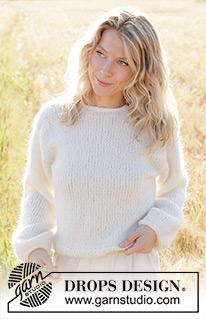




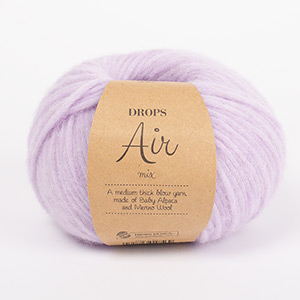
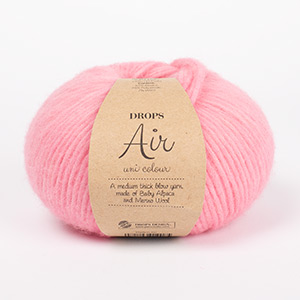





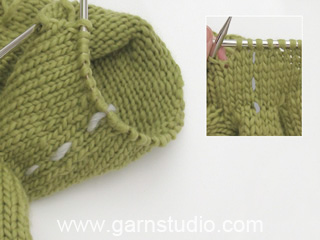




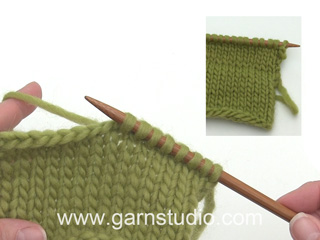

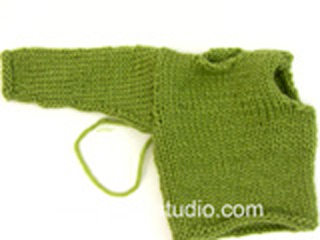
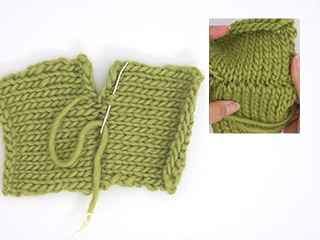

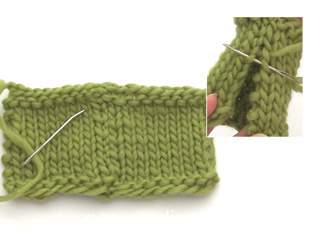

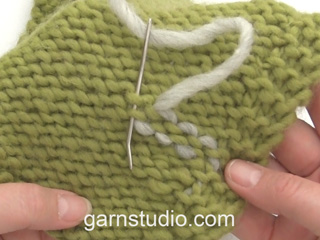
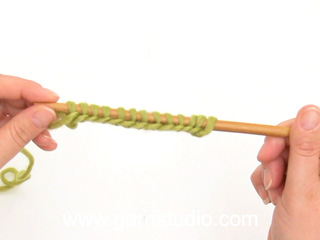
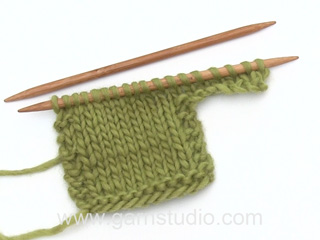

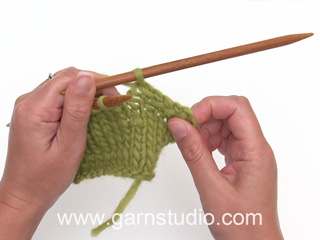

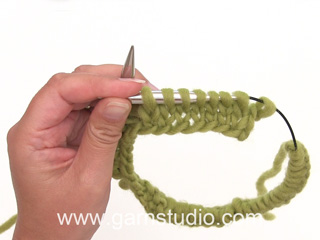
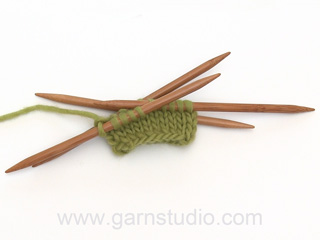
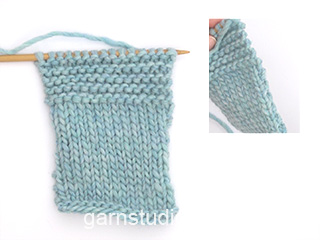
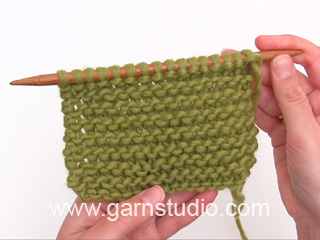
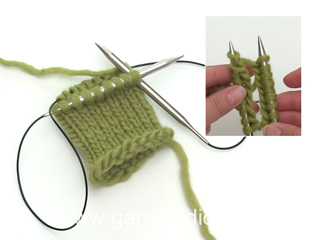

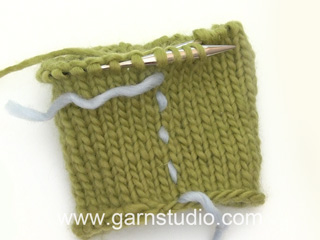

























Comments / Questions (23)
Bonjour, désolée je n'ai pas bien compris votre réponse ç ma question d'hier. Je ne comprends pas où est l'erreur. merci beaucoup
01.10.2024 - 13:57DROPS Design answered:
Bonjour Carine, il s'agissait bien d'une faute de frappe, désormais corrigée, lorsque vous montez vos 4 mailles, remettez ces 4 mailles sur l'aiguille gauche, le fil se trouve bien à 4 mailles du bord. Bon tricot!
02.10.2024 - 09:13Bonjour, pour le rabbatage de la manche en i-cord, après avoir monté les 4 mailles sur l'aiguille de droite pour la bordure et après avoir passé les 3 nouvelles maills sur l'aiguille de gauche, mon fil de pelote ne se trouve pas à 4 mailles du bord sur l'aiguille gauche mais à 2 mailles. Il me reste également une maille sur l'aiguille de droite, je ne sais pas quoi faire avec. Pouvez-vous m'éclairer? Merci
30.09.2024 - 20:25DROPS Design answered:
Bonjour Carine, il semble qu'il y ait une typo ici, glissez les 4 mailles montées de nouveau sur l'aiguille gauche, votre fil va se trouver à 4 mailles du bord, suivez ensuite les indications: 3 m end, 2 m ens torse à l'endroit tout du long. Une correction sera apportée, merci pour votre retour. Bon tricot!
01.10.2024 - 09:09Prosím, při ujímání průramku se píše o značce, ale nikde jsem se nedočetla kam má být značka umístěna děkuji Jana
22.08.2024 - 10:39DROPS Design answered:
Dobrý den Jani, při ujímání u průramků postupujete podle návodu a popisu TIP - UJÍMÁNÍ-1, zde se žádná značka nevyskytuje. Značku vložíme při pletení rukávů do podpaží, na začátek kruhové řady. Při pletení rukávu ujímáte dle popisu v TIP - UJÍMÁNÍ-2. Hodně zdaru!
22.08.2024 - 20:50Hej, stickar i stil S. När man kommer till att minska till ärmhålen på bakstycket efter 27cm , så står det . Minska 3 maskor i början av de nästa 2 v. Läser man minskningstipsen-1 (ärmhålen o hals) så ska man alltid minska från rätsidan. Och själva minskningsbeskrivningen blir konstig om man ska göra detta 3maskor. Är det så att man ska avmaska 2st i var sida istället och sn minska 1m i var sida. Tack på förhand
18.07.2024 - 10:04DROPS Design answered:
Hej Michelle. Ja, jag ser att det stod fel i den svenska översättningen tidigare och detta är rättat nu. Du ska maska av 3 maskor i början av nästa 2 varv och senare minska enligt minskningstipset. Mvh DROPS Design
18.07.2024 - 11:36Hei😊 Har dere et forslag til alternativt garn som kan brukes istedenfor air, gjerne et som ikke inneholder plastikk?
08.06.2024 - 00:43DROPS Design answered:
Hei Helene. Om du ønsker å beholde "puse" effekten kan du f.eks bruke 3 tråder DROPS Kid-Silk (75% Mohair, 25% Silke), eller, men da ingen "puse" effekt, 3 tråder fra garn i garngruppe A , f.eks 3 tråder DROPS Alpaca (100% Alpakka eller DROPS Baby Merino 100% Ull ). Se oversikten over Garngrupper). Du kan også bytte ut DROPS Air med andre kvaliteter i garngruppe C og så beholde DROPS Kid-Silk. Mange valg, men husk å overholde strikkefatheten. mvh DROPS Design
10.06.2024 - 13:29Hei, Jeg har et spørsmål ang ermer. Jeg legger opp nye masker på slutten av hver pinne (3 masker, 3 masker, 0 masker, 2 masker, 2 masker og til slutt 3. Antall masker blir da 39- og ermet måler ca 3 cm. Må jeg gjøre alt dette en gang til? Det står at man skal komme på 52 masker- takk for svar
03.05.2024 - 20:57DROPS Design answered:
Hei Sabrina. Strikker du str. M? Da legger du opp 26 masker og når det skal økes til ermtopp legger du opp 3 masker i hver side 1 gang på slutten av pinnen = 3+26+3 = 32 (det er strikket 2 pinner). Så gjør du det sammen 1 gang til = 3+32+3=38 masker (det er strikket 4 pinner). Deretter 2 masker 2 ganger = 2+38+2 = 42 masker (det er strikket 6 pinne) og 2 + 42 + 2 = 46 masker (det er strikket 8 pinner) og tilslutt skal det legges opp 3 masker 1 gang = 3+46+3 = 52 masker (det er strikket 10 pinner). Da har du økt med 26 masker og strikket 10 pinner + oppleggskanten (= ca 7 cm). mvh DROPS Design
06.05.2024 - 10:26Hello, I would like to knit this 5 cm longer. Where should I add these extra 5 cm? Before the first increase (size S) or before casting off for armholes? Thank you
01.04.2024 - 15:42DROPS Design answered:
Dear Mrs Avram, rather add the 5 cm before casting off for armholes, note that you might require more yarns for these extra cm. Happy knitting!
02.04.2024 - 15:28Hello! I would like to knit this 5cm longer (size S), where can I add these extra 5cm? Before the first round of increase or before casting off for armholes? Thank you
01.04.2024 - 15:34DROPS Design answered:
Dear Corina, if you only want to change the length, I suggest you add that 5 cm after the ribbing and before the first increase. Happy Knitting!
01.04.2024 - 16:34Snowflake
21.01.2024 - 22:46Cotton candy
21.01.2024 - 14:07